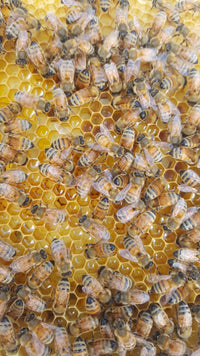At SAVAGE BEE-CHES, we’re thrilled to announce the addition of bee hotels to our boutique in Old Town San Diego. These simple structures are more than just a charming garden accessory; they’re an important tool in the effort to support and protect native bees. To go along with these bee hotels, we’re offering information sessions and workshops to educate our community about how to host and care for these vital pollinators.
Why Focus on Native Bees?
While honeybees often take center stage in discussions about pollinators, native bees play an equally critical role in maintaining healthy ecosystems and supporting the genetic diversity of native plants and trees. San Diego County is home to over 600 species of native bees, making it one of the most biodiverse regions for pollinators in the United States. These include:
-
Mason Bees – Known for their gentle nature and efficiency as pollinators.
-
Leafcutter Bees – Recognizable by their unique habit of cutting small pieces from leaves to build their nests.
-
Carpenter Bees – Large and robust, they’re excellent pollinators for open-faced flowers.
-
Sweat Bees – Tiny, metallic-colored bees often seen visiting wildflowers.
-
Mining Bees – Ground-nesting bees that are particularly important for native plants.
The First Step: Understanding Your Micro-Ecosystem
Before adopting a bee hotel, it’s essential to understand the specific needs of your local environment and the pollinators that inhabit it. Here’s how to start:
-
Identify Local Pollinators: Observe the types of bees and other pollinators visiting your garden or nearby green spaces. Note their size, colors, and the plants they prefer.
-
Match the Bee Hotel to Your Environment: Different species of native bees have unique nesting preferences. For example:
-
Mason bees prefer small tubular spaces, like hollow reeds.
-
Leafcutter bees look for soft materials to line their nests, often in larger tubes.
-
Ground-nesting bees, like mining bees, will not use a bee hotel but benefit from undisturbed soil patches.
-
-
Choose the Right Location: Position your bee hotel in a sunny spot, sheltered from strong winds and rain. Ideally, place it near native flowering plants that will provide bees with food throughout their active seasons.
Customizing Bee Hotels for Maximum Impact
Not all bee hotels are created equal, and selecting the right one is key to attracting native bees. Our workshops and information sessions will cover:
-
How to build or select a bee hotel that suits the specific needs of local bee species.
-
Maintenance tips to keep your bee hotel clean and free from pests.
-
Seasonal care for your bee hotel, including when to remove and clean nesting materials to prevent the spread of disease.
A Multi-Part Educational Journey
This blog is just the beginning. Over the coming weeks, we’ll dive deeper into topics like:
-
The lifecycle of native bees and how to support them year-round.
-
Designing a pollinator-friendly garden with native plants.
-
Common misconceptions about native bees and how to address them (like the myth that native bees produce honey).
-
How climate change and habitat loss are impacting native bees in San Diego.
Join the Movement to Save Native Bees
Our mission at SAVAGE BEE-CHES is not just about selling products; it’s about creating meaningful change. Supporting native bees is a vital step toward preserving biodiversity and ensuring the health of our ecosystems for generations to come.
Stop by our boutique in Old Town San Diego to explore our bee hotels, join an information session, or sign up for a workshop. Together, we can make a difference—one bee hotel at a time. Stay tuned for more insights and practical guides in this blog series.



Leave a comment